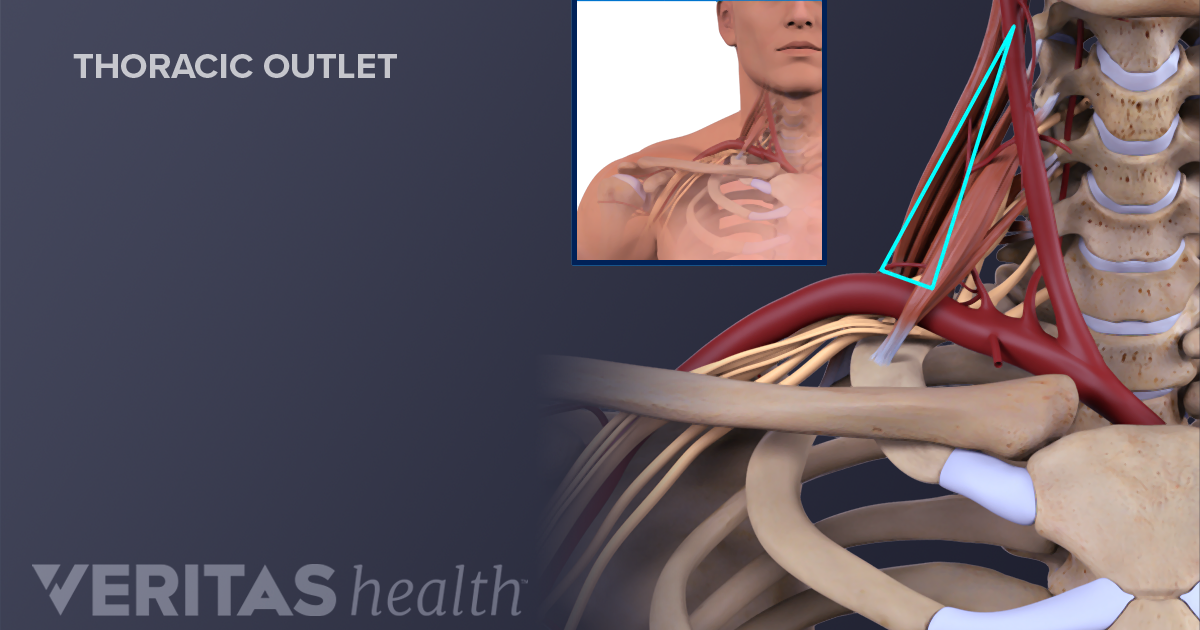Exercise For Thoracic Outlet: Relieve Pain Naturally

The thoracic outlet, a narrow passageway between the neck and shoulder, can sometimes become compressed, leading to a condition known as thoracic outlet syndrome (TOS). This compression can cause pain in the shoulders, neck, and chest, as well as numbness or tingling in the arms and hands. While medical intervention may be necessary in severe cases, there are several exercises and stretches that can help relieve the pain and discomfort associated with TOS naturally.
Understanding Thoracic Outlet Syndrome
Before diving into the exercises, it’s essential to understand the basics of TOS. The thoracic outlet is the space between your collarbone (clavicle) and first rib. Through this passageway, vital blood vessels and nerves that serve the arms pass. Compression of these vessels and nerves can result from various factors, including poor posture, repetitive injuries, or anatomical anomalies. Symptoms can range from mild to severe and may include pain, weakness, or numbness in the neck, shoulder, arm, or hand, and even fatigue or coldness in the hands and fingers.
Exercises to Relieve Pain
Engaging in specific exercises can help alleviate the symptoms of thoracic outlet syndrome. These exercises are designed to improve posture, strengthen the muscles of the shoulder and chest, and increase the range of motion in the shoulder and neck, thereby reducing compression on the thoracic outlet.
1. Shoulder Rolls
- Objective: To loosen up the shoulder muscles and improve posture.
- How to Do It: Stand or sit with good posture. Roll your shoulders forward and upward toward your ears, then back and downward. Repeat this motion 10-15 times. Perform this exercise every hour if you have a job that involves sitting or standing for long periods.
2. Chest Stretch
- Objective: To stretch the muscles of the chest, which can help improve posture and reduce compression on the thoracic outlet.
- How to Do It: Stand in a doorway with your hands on the doorframe at shoulder height. Lean forward until you feel a stretch in your chest and shoulders. Hold for 30 seconds and repeat 3-5 times.
3. Neck Stretch
- Objective: To stretch the muscles of the neck, helping to alleviate pain and stiffness.
- How to Do It: Slowly tilt your head to the right, bringing your ear toward your right shoulder. Hold for 30 seconds and then return to the starting position. Repeat on the left side. Do this 3-5 times on each side.
4. Scalene Stretch
- Objective: To specifically target the scalene muscles, which can contribute to TOS when tight.
- How to Do It: Sit or stand with your arms at your sides. Turn your head to the right, bringing your ear toward your shoulder. Then, gently pull your head to the right with your right hand until you feel a stretch on the left side of your neck. Hold for 30 seconds and repeat on the other side.
5. Thoracic Extension
- Objective: To improve the mobility of the thoracic spine, which can help reduce compression on the thoracic outlet.
- How to Do It: Lie on your back with a foam roller or a rolled towel under your upper back. Slowly lift your head and shoulders off the ground, keeping your hips grounded, and then lower back down. Repeat this motion 10-15 times.
Lifestyle Changes
In addition to these exercises, adopting certain lifestyle changes can help manage TOS symptoms and prevent exacerbation.
- Maintain Good Posture: Avoid slouching or leaning forward, especially when working on a computer or watching TV. Regular reminders to check and correct your posture can be helpful.
- Take Regular Breaks: If your work involves sitting or standing for long periods, take short breaks every hour to stretch and move around.
- Exercise Regularly: Engage in physical activities that strengthen your shoulder and back muscles, such as swimming or yoga. However, avoid exercises that exacerbate your symptoms.
- Manage Weight: Maintaining a healthy weight can reduce strain on your muscles and joints, potentially alleviating some TOS symptoms.
When to Seek Medical Attention
While exercises and lifestyle modifications can provide relief for many people with TOS, there are situations where medical attention is necessary. If you experience severe or worsening symptoms, such as significant arm weakness, numbness, or tingling, or if your symptoms interfere with your daily activities, consult a healthcare provider. A medical professional can provide a proper diagnosis and develop a treatment plan tailored to your needs, which may include physical therapy, medication, or, in some cases, surgery.
Conclusion
Living with thoracic outlet syndrome doesn’t have to mean living with pain. By incorporating specific exercises and adopting healthier lifestyle habits, you can relieve the discomfort and improve your overall quality of life. Remember, while these exercises and tips can be very beneficial, it’s crucial to consult with a healthcare professional for a proper diagnosis and to rule out any underlying conditions that may require medical intervention.
What are the primary symptoms of thoracic outlet syndrome?
+The primary symptoms include pain in the shoulders, neck, and chest, as well as numbness or tingling in the arms and hands. Some individuals may also experience fatigue or coldness in the hands and fingers.
How can I prevent thoracic outlet syndrome?
+Prevention involves maintaining good posture, taking regular breaks if you have a job that involves sitting or standing for long periods, exercising regularly to strengthen your shoulder and back muscles, and managing your weight to reduce strain on your muscles and joints.
When should I seek medical attention for thoracic outlet syndrome?
+Seek medical attention if you experience severe or worsening symptoms, such as significant arm weakness, numbness, or tingling, or if your symptoms interfere with your daily activities. A healthcare provider can provide a proper diagnosis and develop a treatment plan tailored to your needs.
